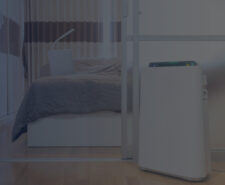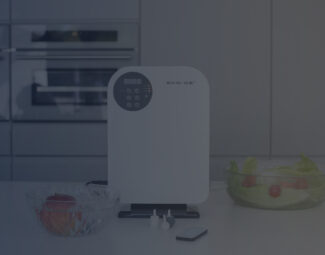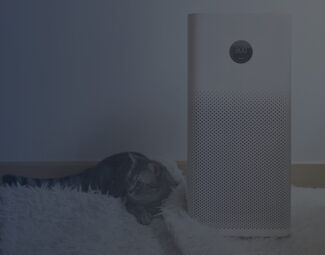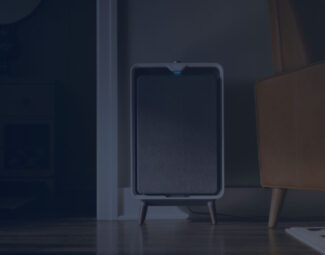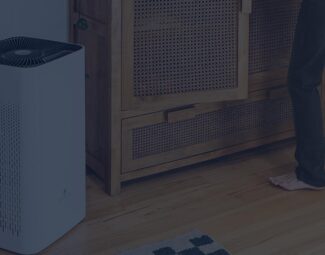W hen investing in an air cleaner, you might be tempted to concentrate more on the functions and features that accompany it seeing how these air quality improvement devices have actually evolved tech-wise quite a lot in the past years, but all of the flashy extra perks are futile if the system isn’t able to perform at peak level in the room you acquire it for.
This is where proper sizing comes in, a crucial aspect with the purchase of an air purifier as, without it, you will end up with a system that will underperform, a scenario that you must avoid at all costs as it results in improper pollution reduction. While it’s easy to figure out that basement air purifiers are indeed able to cover wider areas than systems designed for use in the bedroom or bathroom, if you don’t know the exact square footage, the unit is likely to not provide air cleaning as you need. In the following, we will teach you how to match the air purification system’s coverage area to the room size you intend to use it in, so note down everything you need to make the right purchase and benefit from pro-grade air filtration.

Mother and Daughter Playing in Living Room Where the Air Purifier Functions
Is the Room Size Coverage Provided By the Manufacturer Dependable?
In all niches and industries, manufacturers are known to pump the specs and stats of their products or use cheap tricks to make potential buyers believe the product they’re looking at is better quality-wise than it actually is. Woefully, this goes with air purifiers as well. While some manufacturers are honest and rate their systems according to reality, others mislead customers. Some of the tricks used by air purifier manufacturers to make their products look better than they are or to downright fool buyers include:
- Some provide the size rating in cubic feet rather than square feet to throw off those who aren’t paying attention and make the coverage area seem much larger than it is.
- At times, while the coverage might be truthful, it is possible that the product was actually tested in a controlled environment that doesn’t comply with regular conditions, like a room with short height to the ceiling or an area that is completely empty.
- Another tactic is to use lower air changes per hour to rate higher numbers when it comes to covered space. On the spec sheet, the product might be described as providing two air changes per hour in a 200 square feet area, but this isn’t impressive considering that four air changes will be provided only in a much smaller space of 100 square feet.
What Is CADR and What Role Does It Plays in Air Purifier Sizing
What is CADR?: The measurement used to indicate the pace at which the air purification system will reduce various-sized contaminants from the air, more precisely smoke, dust, and pollen.
Recognized by the U.S. EPA and American Lung Association, the CADR rating indicates the volume of filtered air in cubic feet per minute, with high numbers indicating faster air cleaning speed.
CADR for Full Room Coverage
The AHAM has provided a 2/3 rule when it comes to sizing the air purifier, which means that when you see a CADR rating of 133 CFM, that system, in particular, has been tested in a room measuring 200 square feet in size. Evidently, through correlation, it means that the higher the CADR output is, the system can cover more air and square footage.
Measuring Room Size Based on CADR
Another AHAM guideline is that to accurately measure the room size based on CADR, what you need to do is multiply the value of the certified metric by 1.55. Let’s say that the system you are checking out is rated 350 CFM for any of the three pollutants tested for, this means that the maximum room size it is recommended to use it in is 542.5 square feet.
Is the CADR Rating Dependable?
It is awarded through independent testing by a third party, the AHAM to be specific. While it might not be a perfect depiction of a system’s overall performance, it is more reliable than empty promises made by manufacturers looking to pump their products and draw customers’ attention without any basis for their claims.
This standardized measurement can be used by any product and it serves the purpose of protecting customers from false or misleading performance stats provided by manufacturers. However, there are issues related to CADR. One of these is that the metric relies on airflow distribution, and not all air purifiers rely on it in their operation. The test is performed on the highest speed setting of the system as well, which poses a disadvantage for units that feature multiple settings. While a good guiding point is to determine how efficient the product is at clearing the air of specific pollutants, it shouldn’t be your ultimate guiding line for sizing the air purifier precisely because of these flaws in the testing system.
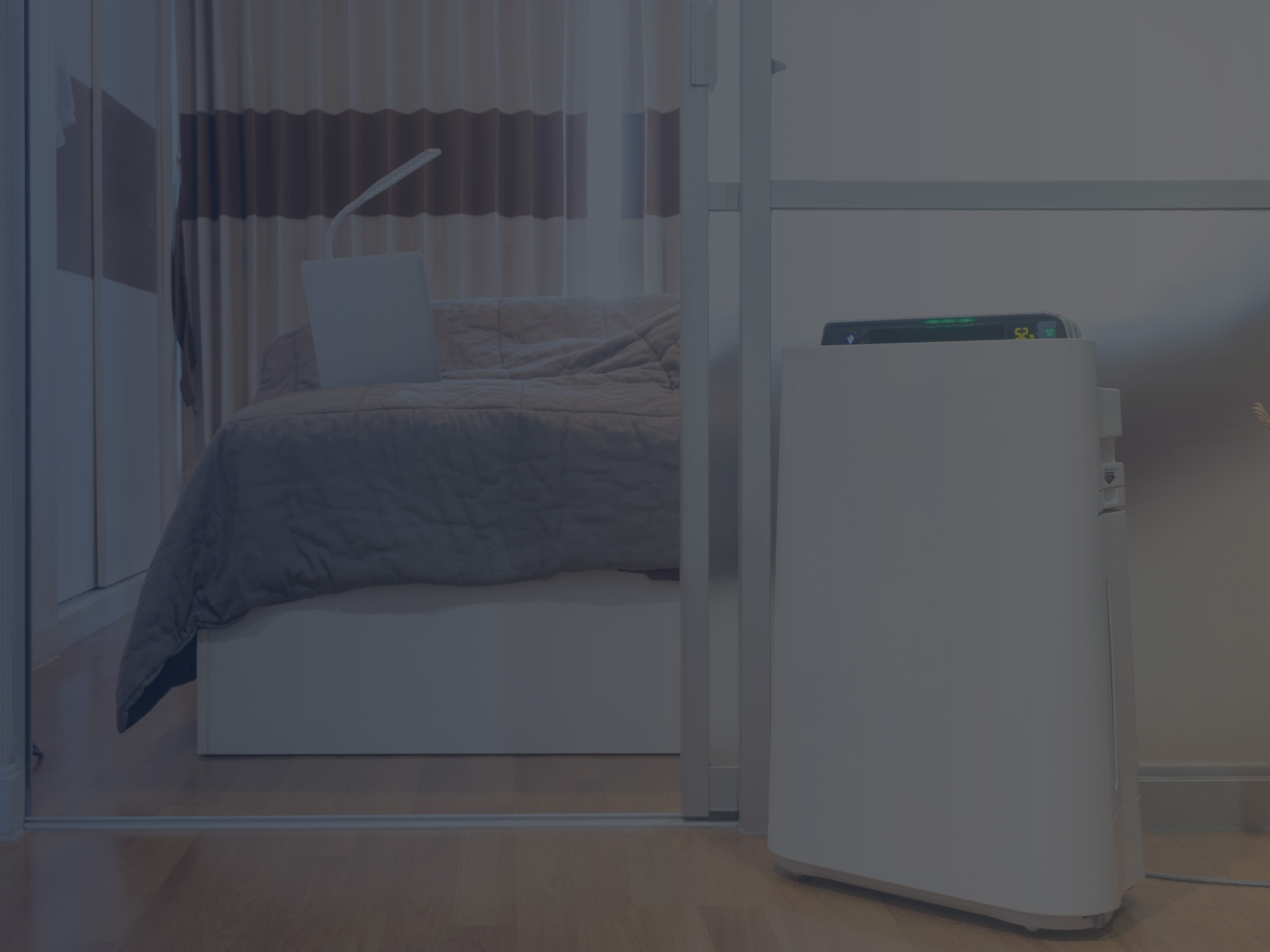
Air Purifier in the Hallway with Bedroom Door Opened
General Selection Guide
Since you are thinking about acquiring an air purifier, it’s clear that the purity of the air in your home isn’t ideal. But how do you make sure you get the right one? Generally, it is recommended to opt for a system that is rated to produce 4 air changes per hour (one every 15 minutes) for a specific size area. Many manufacturers will list their products misleadingly, stating that the system covers 400 sq. ft. rooms, for example, but providing 2 air changes per hour, which means that the product is more effective for a 200 sq. ft. room where it will perform 4 air changes per hour.
You have to take your personal needs into account as well. If the major air quality issue is the presence of allergens that you want to get rid of, putting an accent on air changes per hour according to the rated square footage is all the more important as the impurities need to be filtered out at a fast pace so that allergies don’t get triggered. Ideally, in this case, seek for the unit to provide from 4 to 6 air changes per hour for the square footage you intend it to cover to stay in the clear from any health complications.
As a rule of thumb, even though you will likely have to trust manufacturer-provided ratings for area coverage, you can vaguely use the following guidelines to figure out what your best option is:
- Small-size room: If you intend to use it in a home office, bedroom, or bathroom, you can likely go for a system rated to cover a 200 sq. ft. area.
- Medium-size room: If you want to place it in the lounge or a small-size basement, area coverage of approximately 201 to 399 sq. ft. is likely to suffice.
- Large-size room: In this case, opt for a model rated to cover over 400 sq. ft.
Optimal Placement of the Air Purifier
A common mistake people make as the systems allow it through their design is to place the air purifier in a corner of the room or behind various furniture pieces to mask it, generally for aesthetic reasons. This is quite a huge mistake as you cut from the air filtration performance of the system, not allowing it to draw in air optimally so that the entire room is purified at an optimal pace. Sure, with plug-in air purifiers, you are limited as you must directly plug the system into an outlet for power. Thus, its placement in the room is dictated by the positioning of the outlet. But this isn’t the case with all other systems.
Q: So, where should I place the air purifier in the room?
A: Ideally, you should set it in the middle of the room so that it evenly takes in air from all directions and corners and distributes clean air back optimally, ensuring there is no spot where the air is cleaner than in another area of the same space.
Conclusion
It’s a bit of a gamble figuring out how to size the air purifier to the room you install it in, that’s for sure, but as you can see, it’s not impossible to come close to perfection if you know where to look. CADR and ACH ratings provide quite a useful guide toward acquiring a system that complies with your needs and expectations. In some cases, even the ratings provided by manufacturing companies can be trusted as well. Luckily, with most products, there is a testing period provided, so if you see that the system you acquire isn’t operating up to par, you can exchange it within that guaranteed time span and replace it with an appropriate-coverage system.

